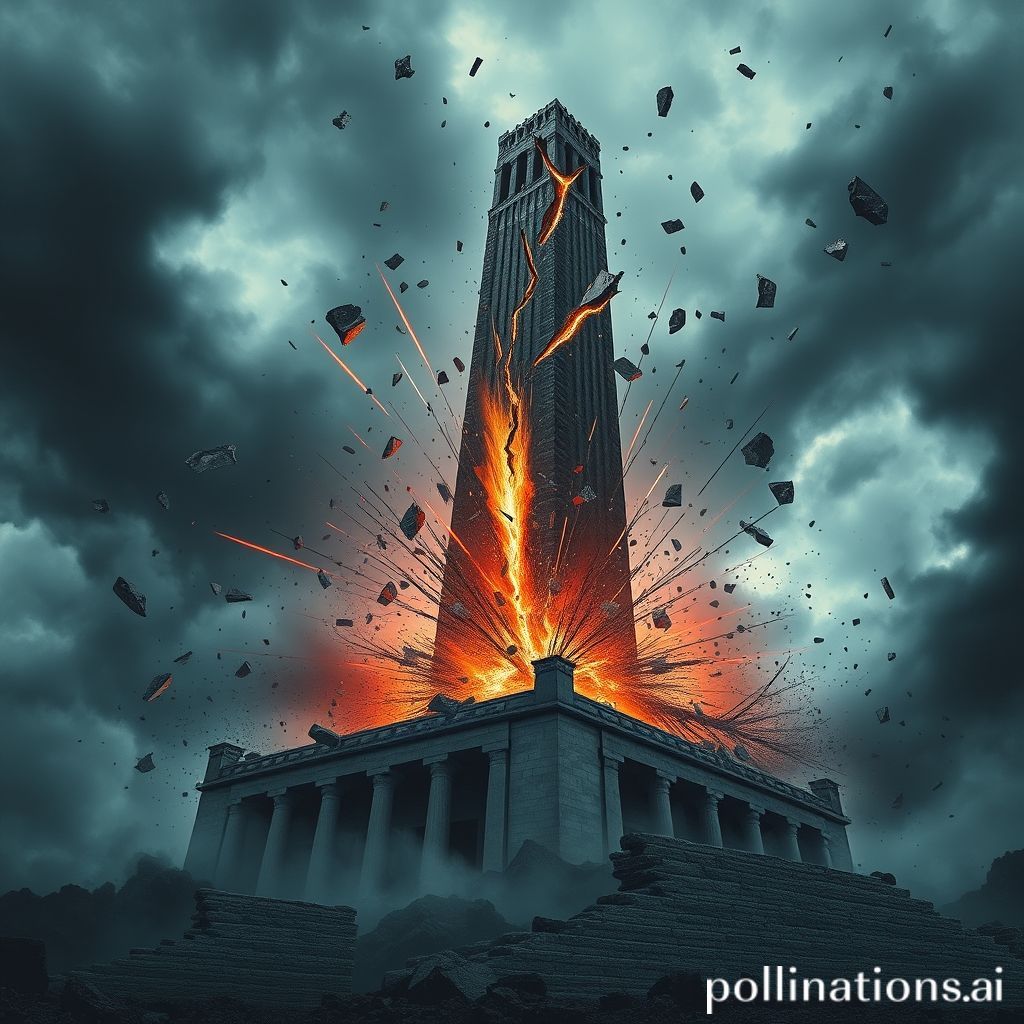
The myth of Iran’s invincibility has been shattered, and the fallout could be far-reaching
The Myth of Iranian Invincibility Shattered: Fallout and Future Implications
Hello everyone, and welcome! For years, a certain narrative has dominated discussions about Iran's military capabilities: the image of an unyielding, almost invincible force. Recent events, however, have challenged this perception, revealing vulnerabilities and potentially reshaping the geopolitical landscape of the Middle East. Let's delve into how this myth was built, how it's been dismantled, and what the consequences might be.
Constructing the Invincible Image: A History of Perception
The idea of Iran as an invincible power wasn't born overnight. It was carefully cultivated, partly through rhetoric, partly through strategic actions, and partly through the perceptions of external observers. The eightyear Iran Iraq War, despite its immense human cost, became a symbol of Iranian resilience. The narrative focused on Iran's ability to withstand external aggression, fostering a sense of national pride and unwavering determination.
Furthermore, Iran's support for regional proxies, such as Hezbollah in Lebanon and various groups in Iraq, Yemen, and Syria, projected an image of regional influence and power projection. These groups, often effective in asymmetrical warfare, became extensions of Iranian power, allowing Tehran to exert influence far beyond its borders. Coupled with its nuclear program, Iran cultivated an aura of strength that deterred direct confrontation.
The Cracks Begin to Show: Recent Challenges to the Narrative
However, beneath the surface of invincibility lay significant weaknesses. The Iranian economy, burdened by sanctions and internal mismanagement, has struggled. This economic strain has limited Iran's ability to modernize its military and maintain its regional proxies.
More critically, recent events have exposed vulnerabilities in Iran's defenses. The successful attacks on Iranian military targets, attributed to Israel and other actors, have demonstrated that Iran is not immune to external strikes. The downing of the Ukrainian passenger plane in 2020 also exposed flaws in Iran's air defense systems and crisis management capabilities. These incidents, combined with internal unrest and growing public dissatisfaction, have eroded the image of a unified and invincible Iran.
The Impact of Shattered Perception: Regional and Global Implications
The erosion of Iran's image as an invincible power has significant implications for the region and the world.
Reduced Deterrence: A less intimidating Iran may embolden its adversaries. Countries like Israel and Saudi Arabia, feeling less constrained by Iranian deterrence, might pursue more assertive policies in the region.
Shifting Alliances: The perception of Iranian weakness could lead to a realignment of alliances in the Middle East. Countries that once relied on Iran for support may seek alternative partners, while those that opposed Iran may feel empowered to push back against its influence.
Increased Internal Instability: A perceived failure to protect the nation and project power could fuel internal discontent and social unrest in Iran. This could lead to further political instability and even threaten the stability of the regime.
Nuclear Program Considerations: The question of Iran's nuclear program becomes even more critical in this new context. A weakened Iran, feeling vulnerable, might be more inclined to accelerate its nuclear program as a means of regaining deterrence. Conversely, a weakened Iran might be more willing to negotiate a deal that would curb its nuclear ambitions in exchange for security guarantees and economic relief.
Comparison of Perceptions: Before and After
| Feature | Before (Myth of Invincibility) | After (Shattered Perception) |
||||
| Regional Influence | Dominant Power, Unchallenged | Diminished Influence, Contested |
| Deterrence Capability | High, Effective Deterrent | Reduced, Less Effective |
| Internal Stability | Relatively Stable, Unified | Increased Instability, Discontent |
| Military Capability | Feared, Formidable Force | Vulnerable, Limited Modernization |
| Alliances | Strong Regional Network | Shifting, Less Reliable |
The Path Forward: Iran's Choices and Global Responses
Iran now faces a critical juncture. It can either double down on its hardline policies, attempting to rebuild its image through aggressive actions and nuclear brinkmanship, or it can adopt a more pragmatic approach, seeking to address its internal challenges, rebuild its economy, and engage in constructive dialogue with the international community.
The international community, in turn, must carefully consider its response. A strategy of containment and pressure may further weaken Iran, but it also risks pushing it towards more desperate measures. A strategy of engagement and diplomacy offers the possibility of a more stable and cooperative relationship, but it requires careful negotiation and a willingness to address Iran's legitimate concerns.
A Personal Reflection
The shifting sands of Middle Eastern politics are a constant reminder of the complexities of international relations. The myth of invincibility, like all myths, was ultimately unsustainable. The challenge now is to navigate the fallout from its collapse and to work towards a more stable and peaceful future for the region. It requires understanding, empathy, and a willingness to engage in difficult conversations. Only then can we hope to build a future where strength lies not in the illusion of invincibility, but in the pursuit of mutual understanding and cooperation.
Comments
Post a Comment